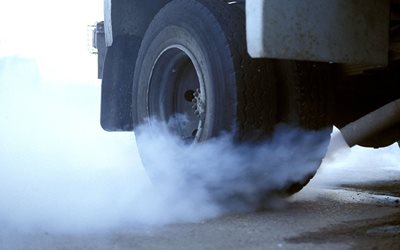Published: 19 June 2018

RHA chief Richard Burnett expressed his disappointment in the government’s approach which he referred to as “chaotic” towards urban air quality control, which was discussed during the Microlise Transport Conference in May.
The RHA has stated it is vital that the government review the guidance provided with local authorities who must now enforce these terms on HGV drivers in the area. They requested that charges be delayed until vehicles are 12 years old or that charges should be capped for Euro 5 trucks at £10 up until 2024.
The RHA feels that the government is aiming to “punish” hauliers, considering the road user levy put in place by local authorities, inserting Controlled Air Zone charges makes the situation even worse. “Haulage is the first and easiest target for government to hit” stated Mr Burnett during his conference speech last month.
He made the case that the government failed to ask what the major sources of air pollution are, unable to bring forward a national strategy to handle the problem appropriately. This also encouraged local authorities to take matters into their own hands and put heavy duty diesel vehicles in the spotlight and consider lorries the problem, without considering other factors in the industry.
Pointing out that the decisions regarding heavy duty vehicles had been rushed and forced in a panic, following the loss of 3 court cases on air quality with ClientEarth lawyers, who were backed by celebrity investment. Following the trial, the court has ordered officials to combat air pollution in 33 towns and cities across the UK as soon as it is possible.
Rather than take the time to consider what options would most benefit road users, the concern is solely addressing air pollution without consideration for the industry, trucks and buses proved to be an easy target. Considering Nitrogen oxides and particulate matter were the main concern regarding the air, diesel trucks and buses are their primary source so they were classed as the biggest problem.
The government took the time to identify the pollution hot spots around the UK, which also suggested other sources might be responsible. Cities like Southampton appeared in the listings, known more for sea and rail. Scunthorpe and South Wales were also identified as a hot spot, both significant for steel-making.
Over the course of 2013 research demonstrated that trucks and buses were responsible for just below 10% of UK Nitrogen Oxides emissions. In 2015, this figure dropped to 8%. On a wider scale, one third of emissions come from other sectors, such as waste and agriculture.
From a baseline set in 2013, NOx emissions had fallen by 21.3% by 2015. By 2017 they had fallen by 42.7% and by 2019 they were projected to decline by 58.1%. By 2025 they would be under 20% of the 2013 figure.
However, operators with Euro 5 vehicles could now be fined £100 a day if the vehicle is taken into central London from 2019 onwards. This has frustrated many, as the earliest availability of the vehicle was around 2013 with most vehicles of this type lasting 10-12 years.
“We need a workable scrappage scheme, otherwise we could see freight being moved onto vans which will cause more congestion and pollution” Mr Burnett stated.
Smaller firms make 80% of the UK haulage industry and many feel they haven’t been informed correctly in regards to bring any of their vehicles up to Euro 6 standards by the 2019 deadline.
Small and medium enterprises made up 80% of the UK haulage industry and were not well-placed to bring their fleets up to Euro 6 standards to meet the 2019 deadline. “Trucks last 12 years, or even longer if fitted with specialist equipment” Mr Burnett reminded those who attended the conference.
“The average SME operator may only make £60 a week from operating a truck. Hauliers unable to pass the cost of the LEZ fine will either have to stop servicing London or go out of business altogether” he warned.
This could be a nationwide issue for lorry drivers, as more cities are set to follow similar standards as those being set in London as the government attempt to combat pollution from vehicles.
“We need your help to lobby politicians” Mr Burnett said in Coventry – outlining a scenario where drivers going to multiple of these cities would each have a different emissions standard and if not met, drivers would have to pay the fine in both cities. This could prove to be a plan that puts businesses at risk but also doesn’t solve the UK’s pollution issue which has sprouted from elsewhere such as steelwork and waste management.
“The situation in the 33 proposed low emission zones is currently chaotic; there is no clarity as to what will be required” he concluded.
During the conference there was also a closing poll involving many professionals in the industry, the data revealed over 85% felt that the steps taken by the government to lower emissions would also have a negative financial impact on their business.